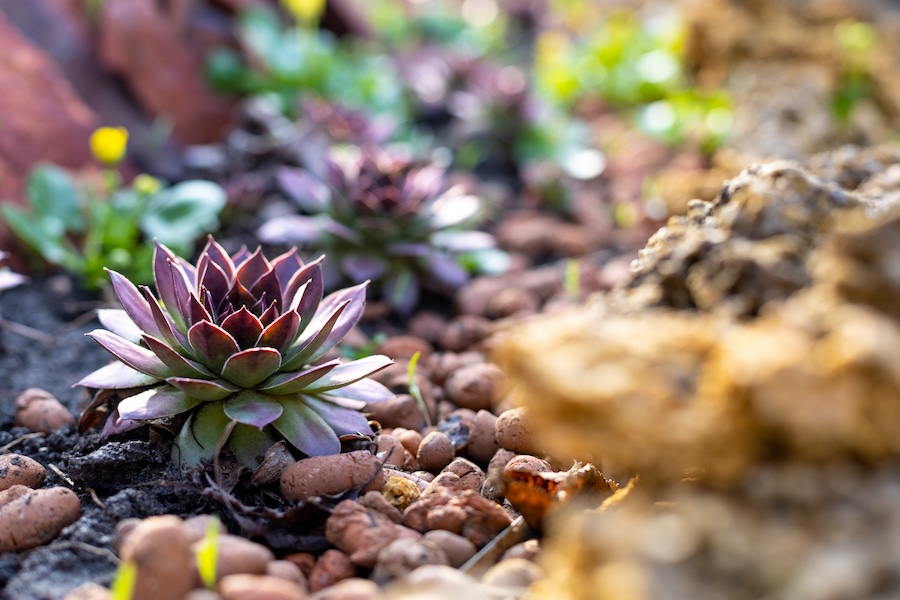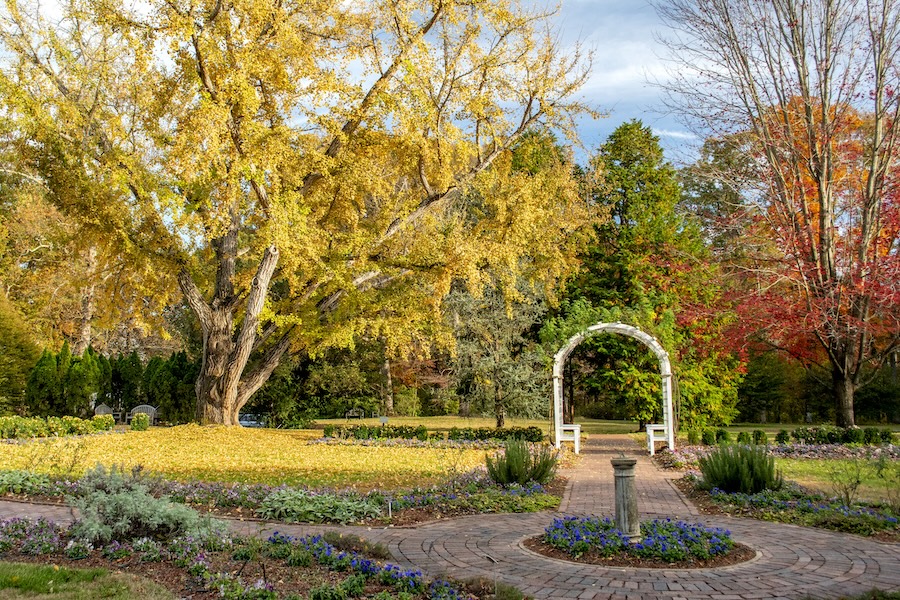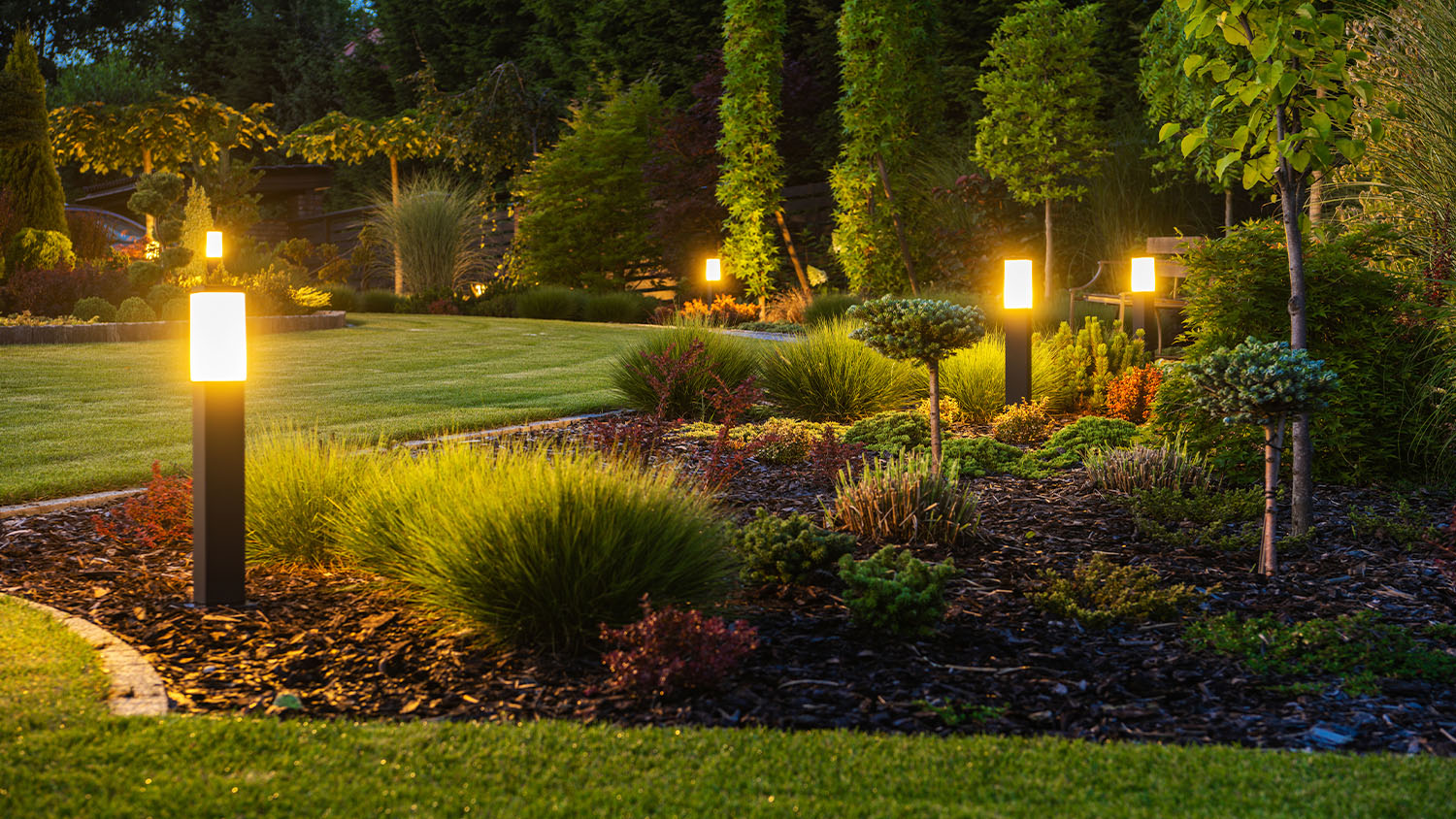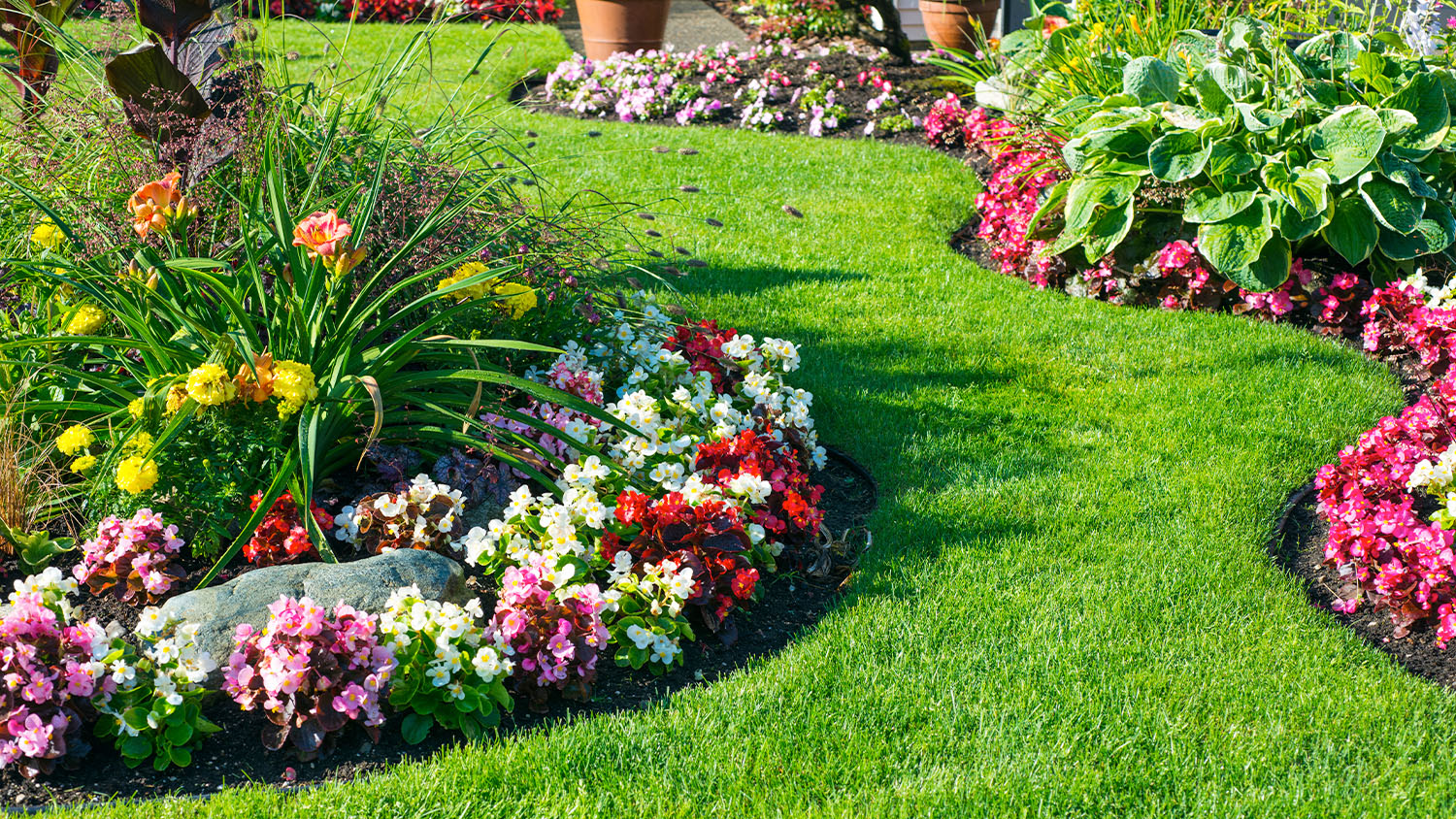Drought-Resistant Landscaping for the Ottawa Home
Ever heard of xeriscaping? If not, you’re in for a treat. Xeriscaping is a landscaping method that focuses on water conservation. It’s perfect for areas with unpredictable weather patterns or simply for those who want to take a more eco-friendly approach to gardening.
In essence, xeriscaping is all about creating a beautiful garden that thrives with minimal water. It’s about working with nature rather than against it.
Water conservation is becoming increasingly important, especially in places like Ottawa where the weather can swing from one extreme to the other. Summers can be scorching, while winters are brutally cold. This kind of climate makes water a precious resource. Traditional gardens often require lots of watering, which isn’t always practical or sustainable here. By adopting xeriscaping, you can have a stunning garden that looks good all year round and uses much less water. It’s a win-win for your wallet and the environment.
Keep reading and get all the tools you need to start your own xeriscape garden right here in Ottawa.
The Fundamentals of Xeriscaping
Starting with xeriscaping might seem daunting at first, but understanding its basic principles can make the process much easier. There are seven key principles to keep in mind, each contributing to a garden that looks great and requires minimal water.
First up is planning and design. This is the foundation of any successful xeriscape garden. A well-thought-out plan can save you time and resources down the line. Before you dig in, take some time to assess your landscape. Think about how you use different areas of your yard and where the sun hits most. Mapping out your garden zones based on water needs is a smart move. Grouping plants with similar water requirements makes irrigation more efficient and ensures your plants thrive.
Next is soil improvement. Good soil is the lifeblood of any garden, and xeriscaping is no different. The goal here is to improve soil to retain moisture while allowing proper drainage. Adding organic matter like compost can enhance soil structure, making it more conducive to water retention. This not only helps your plants but also reduces the need for frequent watering.
Efficient irrigation is another crucial principle. Overhead sprinklers can waste a lot of water through evaporation and runoff. Instead, consider installing drip irrigation systems. These deliver water directly to the base of plants, ensuring maximum absorption with minimal waste. It’s a more precise way to keep your garden hydrated without overdoing it.
When it comes to plant selection, choose wisely. Look for native plants or drought-resistant species that naturally thrive in Ottawa’s climate. These plants are already adapted to local conditions and require less water to flourish. Incorporating a variety of trees, shrubs, perennials, and ground covers can add texture and colour to your garden while keeping maintenance low.
Mulching is a game-changer in any xeriscape garden. A good layer of mulch helps retain soil moisture, suppress weeds, and regulate soil temperature. Organic mulches like wood chips or straw break down over time, adding nutrients to the soil. Inorganic options like gravel or stones are also effective and require less frequent replacement.
Regular maintenance is essential to keep your xeriscape garden looking its best. While xeriscaping is low-maintenance compared to traditional gardening, it still involves some upkeep. Pruning, weeding, and refreshing mulch layers are tasks you’ll need to stay on top of. The key is consistency; a little effort here and there goes a long way.
Lastly, effective water conservation techniques are the backbone of xeriscaping. This involves more than just watering less. Consider collecting rainwater to use in your garden. Rain barrels are a simple and cost-effective way to harvest water for dry spells. Using permeable materials for walkways and patios can also help reduce runoff and allow rainwater to soak into the ground.
By applying these principles, you can create a xeriscape garden that’s not only beautiful but also sustainable. You’ve got the basics now, so let’s move on to planning and designing your garden specifically for Ottawa’s unique climate.
Planning and Design for Ottawa Homeowners
Planning your xeriscape garden is where the fun begins. A good plan sets the stage for a thriving, water-efficient garden.
Start by assessing your current landscape. Take note of the sun exposure, shade, and how water flows through your property. Knowing these details helps you make informed decisions about where to place different plants and features.
Zoning your garden according to water needs is a smart strategy. Group plants with similar water requirements together. This makes watering more efficient and ensures each plant gets what it needs without wasting water. Think about creating hydrozones – areas within your garden that are watered differently based on the plants’ needs. For example, you might have a high-water zone for delicate plants and a low-water zone for hardy, drought-tolerant species.
Hardscapes and functional features can add both beauty and practicality to your garden.
Paths, patios, and rock gardens not only look great but also reduce the amount of space that needs watering. Consider materials that allow water to permeate, like gravel or permeable pavers. These help reduce runoff and allow rainwater to soak into the ground. Water features like ponds or fountains can also be incorporated, but opt for recirculating systems to minimize water use.
Incorporating raised beds can also be beneficial. They allow for better control over the soil quality and drainage. Raised beds can be ideal for vegetables or other high-maintenance plants. They can also add a structured, organized look to your garden, making it easier to manage different zones.
Don’t forget about aesthetics. A well-designed xeriscape garden can be incredibly beautiful. Use a variety of textures and colours to create visual interest. Mix different plant heights and forms to add depth and dimension. It’s not just about function; your garden should be a place you love to spend time in.
Soil Improvement Techniques
Soil is the foundation of any great garden. In xeriscaping, good soil is even more critical. It needs to retain moisture yet drain well to prevent root rot. Improving your soil can make a world of difference in how well your plants perform.
Start by testing your soil to understand its current state. You can get a soil test kit from a garden centre or send a sample to a lab for detailed results. Knowing the pH and nutrient levels helps you decide what amendments are needed. Most Ottawa soils benefit from the addition of organic matter. Compost is a fantastic amendment that improves soil structure, adds nutrients, and enhances water retention.
Adding organic matter like compost or well-rotted manure can significantly improve soil health. These materials break down slowly, providing a steady supply of nutrients to your plants. They also improve soil texture, making it easier for roots to grow and for water to penetrate. Aim to work a generous layer of compost into your soil at the beginning of the planting season.
Mulching is another effective way to improve soil quality. A good mulch layer can help retain soil moisture, suppress weeds, and regulate soil temperature. Organic mulches, like wood chips or straw, break down over time, adding even more organic matter to the soil. Inorganic mulches, like gravel or pebbles, are also effective and don’t need to be replaced as often.
Improving drainage is crucial, especially if your soil is heavy clay. Poor drainage can lead to waterlogging, which is detrimental to most plants. Adding sand or fine gravel can help improve drainage. Raised beds are also an excellent option for plants that require well-drained soil. They allow for better control over the growing conditions, ensuring your plants have the best chance to thrive.
Soil health is an ongoing process. Regularly adding organic matter and adjusting pH as needed keeps your soil in top condition. Healthy soil is teeming with beneficial microorganisms that help break down organic matter and make nutrients available to plants. Keeping your soil healthy reduces the need for chemical fertilizers and promotes a more balanced, natural ecosystem in your garden.
Efficient Irrigation Systems
Getting your irrigation right is the heart of xeriscaping. Efficient irrigation ensures your garden gets the water it needs without waste. Traditional sprinklers often lead to water loss through evaporation and runoff. Drip irrigation, on the other hand, delivers water directly to the plant roots. This method minimizes waste and ensures your plants get the moisture they need right where they need it.
Drip irrigation systems are relatively easy to set up and can be customized to fit your garden layout. They consist of a network of tubes and emitters that release water slowly and steadily. This slow delivery allows the soil to absorb water more efficiently, reducing the risk of waterlogging or runoff. You can even set up timers to automate the process, ensuring your plants are watered consistently without any effort on your part.
Rain barrels are another excellent way to conserve water. These barrels collect rainwater from your roof, which you can then use to water your garden. It’s an eco-friendly solution that makes use of natural resources. Plus, rainwater is free and often better for plants than tap water, which can contain various chemicals. Setting up a rain barrel system is straightforward and can significantly reduce your water bills.
Timing and frequency of watering are also of big importance when it comes to xeriscaping. Early morning or late evening is the best time to water your garden. This reduces evaporation and ensures that more water reaches the roots. Over-watering can be just as harmful as under-watering. It’s essential to monitor the moisture levels in your soil and adjust your watering schedule accordingly. With a well-planned irrigation system, you can maintain a healthy garden while conserving water.
You can also consider using soaker hoses. These hoses release water slowly along their length, making them perfect for gardens with dense planting. They’re easy to install and can be buried under mulch to reduce evaporation. Soaker hoses are flexible and can be arranged to fit any garden shape, providing a versatile solution for efficient watering.
Selecting Drought-Resistant Plants for Ottawa
Choosing the right plants is a key part of xeriscaping. Drought-resistant plants are essential for creating a garden that thrives with minimal water. In Ottawa, where the climate can be unpredictable, selecting plants that can withstand both dry spells and the cold is crucial.
Native plants are a great place to start.
These plants are naturally adapted to the local climate and conditions, making them more resilient and easier to care for. Some excellent options include the eastern red cedar, serviceberry, and various types of sumac. These plants not only require less water but also support local wildlife.
Perennials are another excellent choice for a drought-resistant garden.
They come back year after year, reducing the need for replanting and saving you time and money. Look for hardy varieties like coneflower, black-eyed Susan, and yarrow. These plants are known for their drought tolerance and can add vibrant colours to your garden throughout the growing season.
Drought-tolerant shrubs and trees can provide structure and shade to your garden. Shrubs like juniper and potentilla are great options, as they can survive with minimal watering once established. Ornamental grasses such as feather reed grass or blue fescue can also add texture and movement to your landscape. They are not only low-maintenance but also highly drought-resistant.
Ground covers are worth considering for filling in spaces and reducing weed growth. Plants like sedum, creeping thyme, and stonecrop are excellent low-water options. They spread quickly and create a lush, green carpet that requires little maintenance. These ground covers can also help with soil erosion and add a finished look to your garden.
Creating a plant palette involves mixing different types of plants to achieve a balanced and aesthetically pleasing garden. Combining trees, shrubs, perennials, and ground covers can create layers and depth. This not only looks beautiful but also maximizes the garden’s resilience. Each layer can serve a purpose, from providing shade to retaining soil moisture.
When selecting plants, always consider their water needs and how they fit into your garden’s zones. Grouping plants with similar requirements makes your watering efforts more efficient. This reduces waste and ensures that each plant gets the appropriate amount of water. It’s about creating a harmonious garden where every element works together to conserve resources.
Maintenance and Sustainability
Maintaining a xeriscape garden is low-effort but requires regular care. Simple tasks like pruning, weeding, and refreshing mulch keep your garden healthy and beautiful.
Pruning encourages new growth, maintains shape, and removes dead branches. It also improves air circulation, reducing fungal issues. Use sharp, clean tools for precise cuts.
Weeding is crucial even with mulch. Hand weeding minimizes soil disturbance and helps your plants get the nutrients they need. Regularly refresh your mulch to maintain its effectiveness.
Sustainable practices are key. Use natural fertilizers like compost, practice crop rotation, and choose pest-resistant plants. These methods keep your garden thriving without harsh chemicals.
Professional landscaping services can help. Jonathan Robert Landscapes offers expertise to maintain your garden, from seasonal clean-ups to irrigation checks.
Composting kitchen scraps and garden waste enriches your soil, while rain barrels provide a free, chemical-free water source. These are simple steps that make a big difference.
Keep Your Garden Flourishing
Xeriscaping offers a smart, sustainable way to create a beautiful garden for Ottawa’s climate. By focusing on water conservation, you’re not only helping the environment but also reducing your maintenance efforts. This approach to gardening transforms your outdoor space into a vibrant, drought-resistant haven. With efficient irrigation, improved soil, and the right plant selection, you can enjoy a lush garden that thrives in Ottawa’s climate. Mulching and regular maintenance keep everything in top shape with minimal effort.
Ready to take the plunge? Jonathan Robert Landscapes can help you create the perfect xeriscape garden for your Ottawa home. With our experience and passion for landscaping, we can turn your vision into reality.






